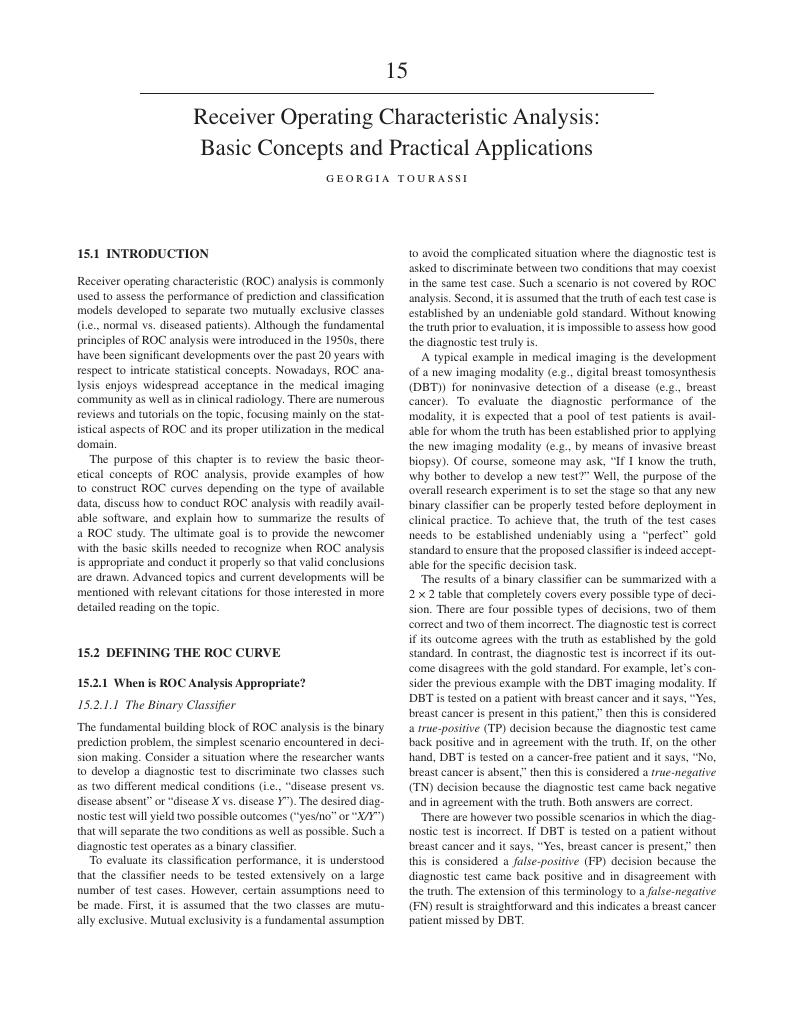Book contents
- The Handbook of Medical Image Perception and Techniques, Second Edition
- Reviews
- The Handbook of Medical Image Perception and Techniques
- Copyright page
- Dedication
- Contents
- Contributors
- 1 Medical Image Perception
- Part I Historical Reflections and Theoretical Foundations
- Part II Science of Image Perception
- Part III Perception Metrology
- 14 Designing Perception Experiments
- 15 Receiver Operating Characteristic Analysis: Basic Concepts and Practical Applications
- 16 Multireader ROC Analysis
- 17 Memory Effects and Experimental Design
- 18 Observer Models as a Surrogate to Perception Experiments
- 19 Implementation of Observer Models
- 20 Value and Limitations of Observer Models
- Part IV Clinical Performance Assessment
- Part V Computational Perception
- Part VI Applied Perception
- Index
- References
15 - Receiver Operating Characteristic Analysis: Basic Concepts and Practical Applications
from Part III - Perception Metrology
Published online by Cambridge University Press: 20 December 2018
- The Handbook of Medical Image Perception and Techniques, Second Edition
- Reviews
- The Handbook of Medical Image Perception and Techniques
- Copyright page
- Dedication
- Contents
- Contributors
- 1 Medical Image Perception
- Part I Historical Reflections and Theoretical Foundations
- Part II Science of Image Perception
- Part III Perception Metrology
- 14 Designing Perception Experiments
- 15 Receiver Operating Characteristic Analysis: Basic Concepts and Practical Applications
- 16 Multireader ROC Analysis
- 17 Memory Effects and Experimental Design
- 18 Observer Models as a Surrogate to Perception Experiments
- 19 Implementation of Observer Models
- 20 Value and Limitations of Observer Models
- Part IV Clinical Performance Assessment
- Part V Computational Perception
- Part VI Applied Perception
- Index
- References
Summary

Information
- Type
- Chapter
- Information
- The Handbook of Medical Image Perception and Techniques , pp. 227 - 244Publisher: Cambridge University PressPrint publication year: 2018
References
Accessibility standard: Unknown
Why this information is here
This section outlines the accessibility features of this content - including support for screen readers, full keyboard navigation and high-contrast display options. This may not be relevant for you.Accessibility Information
- 2
- Cited by
